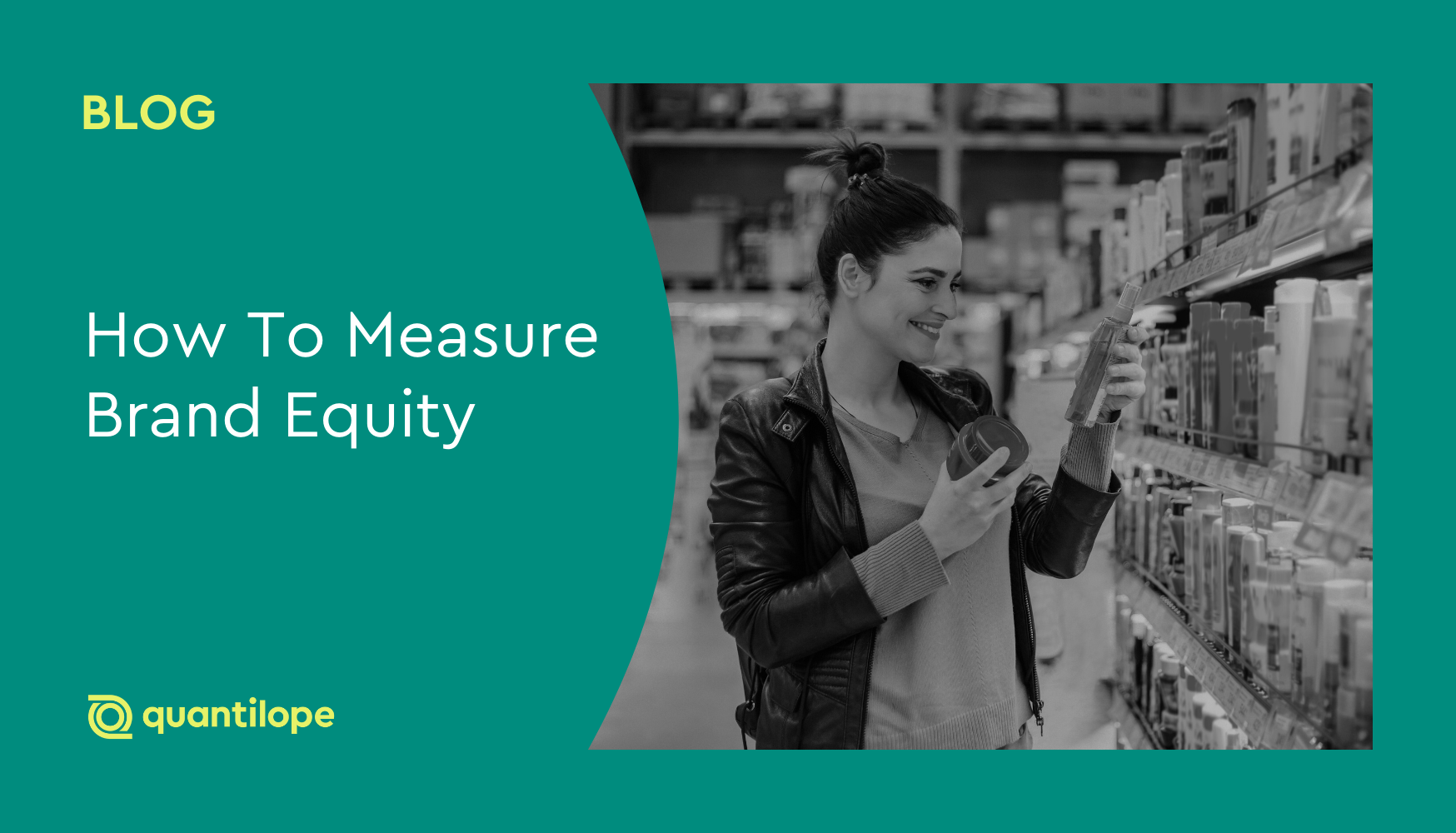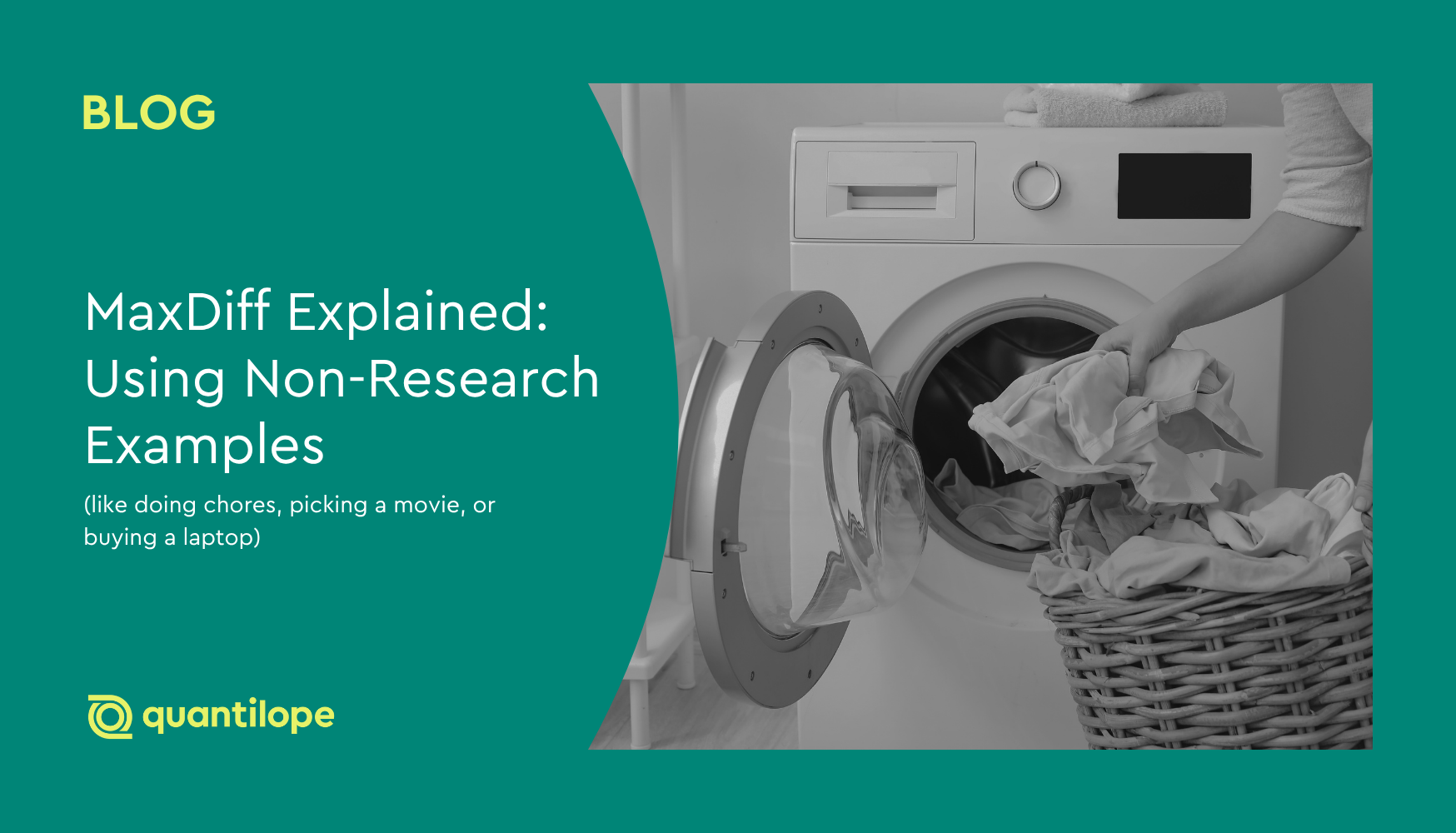Below we'll explore brand equity – including what it is, the metrics that you’ll want to measure, market research trends that could impact it, and how to go about measuring it with quantilope.
Key Takeaways:
-
Brand equity represents the perceived value of a brand beyond its financial worth, encompassing practical and emotional benefits that drive customer loyalty and market share.
-
The seven core metrics for measuring brand equity include brand awareness, preference, relevance, engagement, reputation/image, competitive positioning, and profitability, each providing insights into different aspects of consumer-brand relationships.
-
Modern brand tracking focuses on Category Entry Points (buying situations that trigger consumer needs) and Mental Availability (how likely consumers are to think of your brand in those situations) rather than traditional metrics alone.
-
quantilope's automated brand health tracking solution measures brand equity through the real-time monitoring of consumer behavior patterns and competitive dynamics to create actionable growth strategies.
Table of Contents
What is brand equity?
Brand equity can be described as the perceived value of a particular brand - not just financial but also practical and emotional. No matter what a brand is worth on the balance sheet, a brand is only of value to consumers if it delivers what they’re looking for. Having strong brand equity leads to increased profitability, sustainable customer loyalty, and increased market share, among many other benefits.
Multiple factors contribute to positive brand equity, including strong brand awareness, brand relevance, and brand image. A key factor in brand equity is the reputation a brand has built for itself (and that doesn’t happen overnight!). Over time, a brand will establish its unique selling points (USPs), build customer loyalty, and potentially become a household brand name.
Some particularly strong examples of brand equity would be the use of ‘Kleenex’ in place of a tissue, ‘Band-Aid’ in place of a bandage, and ‘Purell’ in place of hand sanitizer. These are all brand equity examples where consumer awareness and trust are so high, consumers think of the brand in place of the actual product name. While this is a great example, brand strength doesn’t always mean that consumers use a brand name as a generic reference to a product; strong brand equity can also mean that a brand is top of mind in its category for consumers or one of the main players in it.
Knowing that there are multiple factors to measure in order to calculate a brand’s equity, let’s take a look at which brand equity metrics to consider when designing brand equity research.
Back to table of contents
Brand equity metrics to measure
Measuring brand equity is key for setting a benchmark of where your brand sits today and where it needs to improve to boost its overall reputation.
To measure brand equity, start with these brand tracking metrics and adapt them based on your unique brand needs:
Brand awareness
Though simple in theory, brand equity is nothing without brand awareness as its foundation. If consumers don’t even know about your brand, they’ll never develop perceptions of it or become loyal customers. To measure brand awareness, you can use both unaided or aided questions.
Unaided brand awareness is more authentic than aided awareness, as respondents have to type in responses that spontaneously come to mind when they’re asked to list brands in (say) the soda category. This is great for measuring top-of-mind awareness (i.e. which brands they enter first) along with other spontaneous brand mentions.
Aided brand awareness would look like a list of brands (yours included), with respondents asked to choose the brands they are aware of. As you might imagine, there are times when a respondent will select a brand (or all brands for that matter!) even if they’re not aware of them. That’s why data cleaning tools are so important (more on that here) and why aided awareness is often used in conjunction with an unaided question (which would be asked first).
Brand preference
Brand preference measures how many consumers gravitate toward your brand and why. You can ask brand preference in a variety of ways - both quantitatively and qualitatively.
In a quantitative questionnaire, you might show a respondent two branded products and ask them which they prefer. You could also separate out branded products in an A/B test, so respondents are only providing their preference for one brand in isolation. Asking respondents to compare across brands or rate brands in isolation gives a good idea of how your brand stacks up against others.
Taking a qualitative route, you could take the same approach of showing a focus group a branded product and asking them to provide feedback on it. This is a great way to get detailed feedback on the elements of your brand that are working and which are not. It could be a simple element that might seem insignificant but is deeply important to customers (like the font used on packaging or a snap lid instead of a zipper seal). Details like fonts, colors, and tone of voice in communication can all feed into consumers’ subconscious perceptions of a brand (Is it serious? High quality? Does it come across as a leader in its field? Does it foster an emotional connection with the brand?) - and can therefore be instrumental in shaping brand equity. Certain technical elements (like a snap or zipper package closure) sway more toward product preference than brand preference, but even so, product preference has an impact on brand preference and brand relevance, and if consumers prefer your products, they’ll look for your brand on the shelf next time they’re in the store.
Brand preference is also measurable using sales data, which shows those with the strongest brand performance in a category. However, because sales data doesn’t always tell the whole story (i.e. do people buy something because of price, quality, availability, etc.), sales data can be used as a springboard to gather deeper brand insights through quantitative or qualitative studies. In these studies, brands can further measure brand preference as it relates to customer satisfaction or customer loyalty, which guides effective marketing messaging or product development strategies.
Brand relevance
Brand relevance measures the extent that a brand meets its target customers’ needs. Not all brands will be relevant to all shoppers. Think about the difference between someone shopping for vegan milk vs. dairy milk (differing digestive needs) or a customer shopping for a surfboard while another customer shops for a dirt bike (differing hobbies).
As a brand, you need to iron down who your target audience is (or who you want it to be) and figure out how to make your brand relevant to their particular shopping needs or goals. With this in mind, you can start with a consumer insights study to understand consumers’ priorities and use those findings to guide product development and marketing strategies.
One way to measure consumer priorities is through a MaxDiff (which forces respondents to make tradeoff decisions between a long list of items). Say, for example, you run a MaxDiff and find out that ‘non-GMO’ is super important to your shoppers, while they don’t appear to care much at all about ‘sugar-free’. This means that your shoppers are going to look for the brands that are ‘relevant’ to them in-store by searching for ‘non-GMO’ products. Knowing what it is that consumers prioritize and need from your category will help generate customized messaging that is relevant to your audience.
This brings us to another component of brand relevancy - competition. You’re not going to be the only brand that meets a set of criteria for your target audience. So how do you make sure your brand’s products or services are more relevant than competitors, or, how it’s relevant for different reasons? One way to do so is through a Conjoint analysis - which compares two competitive products side by side and asks respondents which they’d choose. This is a great way to measure relevancy, as a respondent is going to pick the product that’s most relevant to their preferences or needs.
Brand engagement
Brand engagement is a measure of how much consumers interact with a brand and what the strength of that bond is. It ties in closely with brand preference; consumers interact more with the brands that fulfill their needs, either practically or emotionally.
For example, consumers might engage more closely with their favorite brands on social media by tagging them in pictures or responding to their posts with comments. Or, think about your favorite retailers and how you tend to frequent their websites over others to see what kind of new products they might have (even when you don’t need to buy anything specific). These are some examples of engagement.
Additionally, consumers might sign up to be part of brands’ loyalty programs or newsletters so they can always stay up to date on the brand’s latest releases. As a result, the brand remains top of mind for those consumers, with continual engagement beyond simply a point of sale. It’s this continued engagement that generates brand loyalty over time - and thus, strong brand equity.
One way to measure brand engagement is to look at social media, website metrics, or marketing campaigns for things like traffic, likes, shares, comments, etc. Another way is through the use of quantitative or qualitative feedback, asking respondents how often they visit a brand’s website or page, shop at their store, or engage with the brand in some way.
Brand reputation/image
Brand reputation/brand image is the ‘feel’ that a brand gives off to its consumers. It might be a brand that is fun, down-to-earth, quirky, cool, sensible, old-fashioned, stale, ahead of its time, and so on.
Brand image is important in both service and product industries, especially as many consumers make purchase decisions based on other people’s experiences and how they talk about the brand. Consumer reviews especially drive brand reputation, as do news/PR stories reporting on business activities - for example, a company’s attitude toward social responsibility or environmental impact. However, brand reputation builds steadily over time, and can have ups and downs depending on its own decisions and consumer experiences of the brand. Consumers will look toward the brand to see how it reacts during those low periods - a huge make-or-break point for brand reputation.
Online surveys are one way to easily collect views of a brand’s reputation (e.g. is it environmentally conscious? Does it deliver high-quality products/services? Does it care about its customers?). You might even want to include a NPS (Net Promoter Score) question that measures how likely consumers are to recommend (or, promote) a brand to friends and family.
Brand competition
Competitive metrics are important because brand equity is often in the context of the market in which a brand operates. What a brand’s competitors do, or don’t do, impacts that brand. If a brand is operating in a fierce marketplace with a lot of strong brands competing for consumers’ attention, customer retention will be difficult. Brands will want to pay attention to competitors in their category to see where consumers’ needs aren’t being met, and how they can solve those gaps.
With competitive brand research, you can focus on how consumers perceive competitors through a quantitative online survey comparing brand metrics like awareness, preference, relevance, and engagement. You might even want to look at competitors’ publically-available financials to see where they compare to your own, which can be a helpful benchmark to use as a measure of brand success; which brings us to...brand profitability.
Brand profitability
Brand profitability is measured using financial metrics to determine revenue after costs. In researching brand profitability, you might want to consider whether your brand can command a price premium compared to competitors, the average transaction value, market share, company monetary value, and the customer lifetime value (how much the brand brings in over a customer’s lifetime). All these profitability metrics are a reflection of your brand’s overall brand equity.
Keep in mind that the more emotional aspects of the consumer-brand relationship mentioned above (such as brand relevance and brand engagement) will have an impact on a brand’s financial value; if relevance and engagement are strong, sales will be too.
Back to table of contents
How to measure brand equity with quantilope
Typically, measuring brand equity involves implementing a comprehensive brand tracking survey that asks members of your target market to rate your brand on the key metrics mentioned above: awareness, preference, relevance, engagement, reputation, competition, and profitability.
However, quantilope has modernized the ways of capturing brand equity through an ongoing brand tracking solution. After all, brand equity is something that builds (or falls) over time, meaning you have to continuously monitor consumer experiences with your brand.
With quantilope’s real-time, automated brand health tracking solution, insights leaders don’t have to worry about including each of the above-mentioned brand equity metrics (which sometimes, are not all that actionable). The tracker includes two modernized concepts to measure brand value:
-
Category Entry Points: these are buying situations - an opportunity for your brand to fulfill consumers’ needs. For example, these situations might be triggered by thoughts such as ‘I need a sugar fix,’ ‘these socks are worn out,’ or ‘I really need to upgrade my phone.’ The need for something leads to the search for a product/service that fulfills that need, and the aim is for your brand to be top of mind in that situation.
-
Mental Availability: how likely consumers are to think of your brand when they find themselves in a certain buying scenario (aka, a Category Entry Point). This would be something like ‘I need to grab a Coke for my sugar craving’, ‘I should order some Bombas socks online’, or ‘I’m going to go check out the new Apple iPhone 14’.
These modernized concepts help brands create an action plan - knowing where consumers are interacting with their category (Category Entry Points) and who their closest competitors are that could be impacting their Mental Availability.
To learn more about how quantilope’s modernized brand health tracking solution works for measuring brand equity over time get in touch with your quantilope team!




